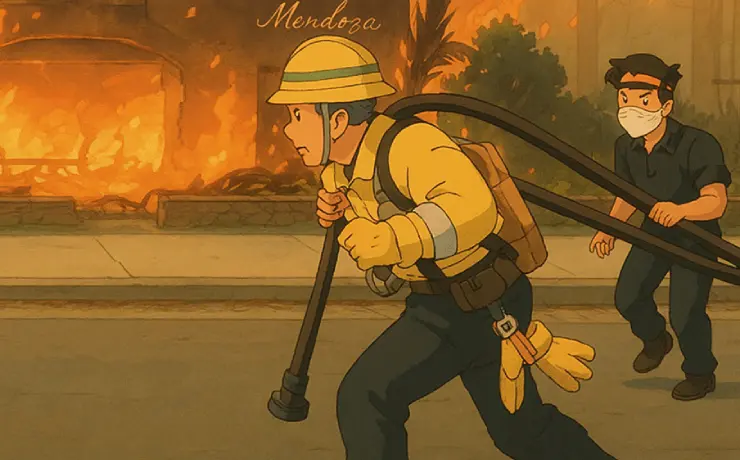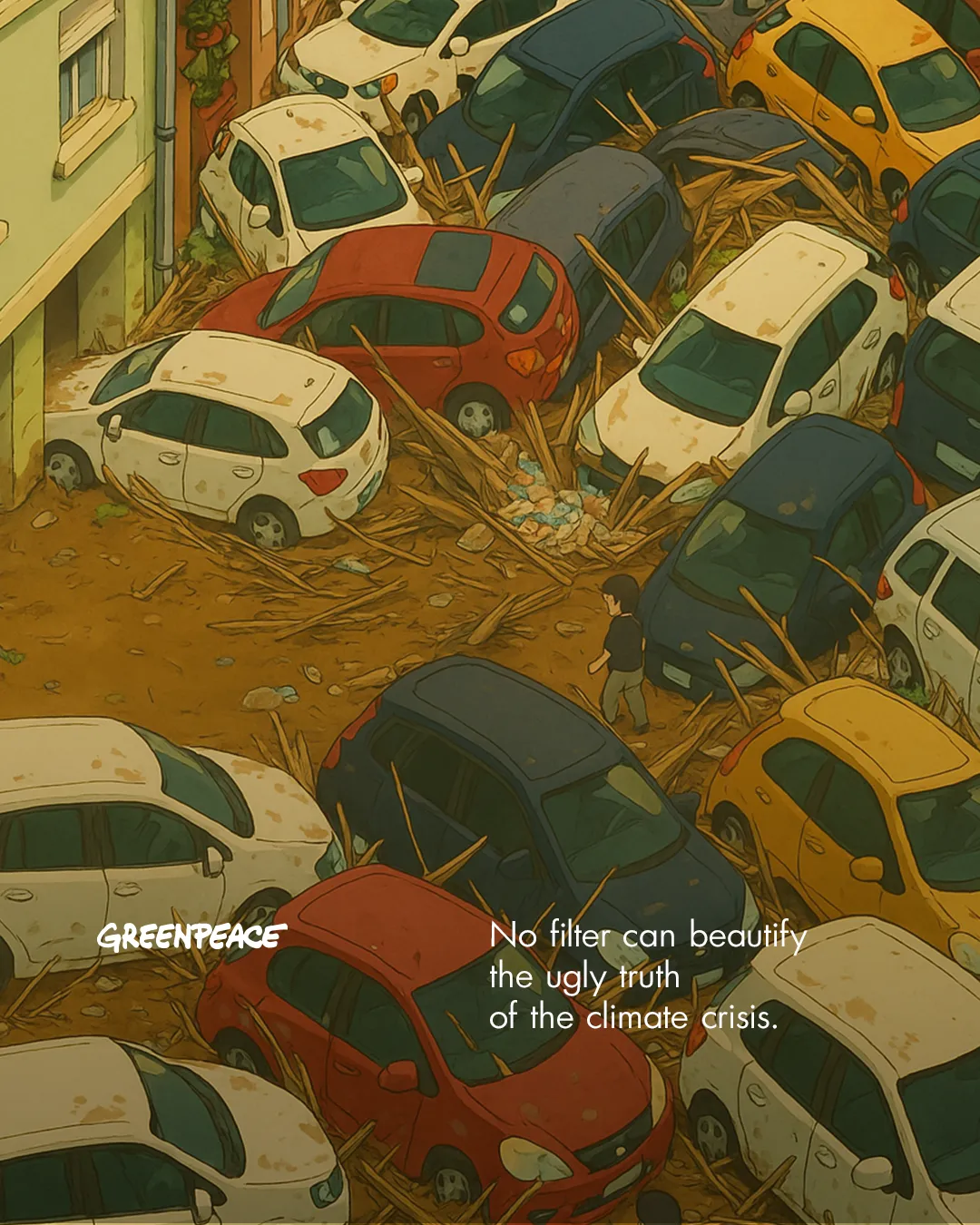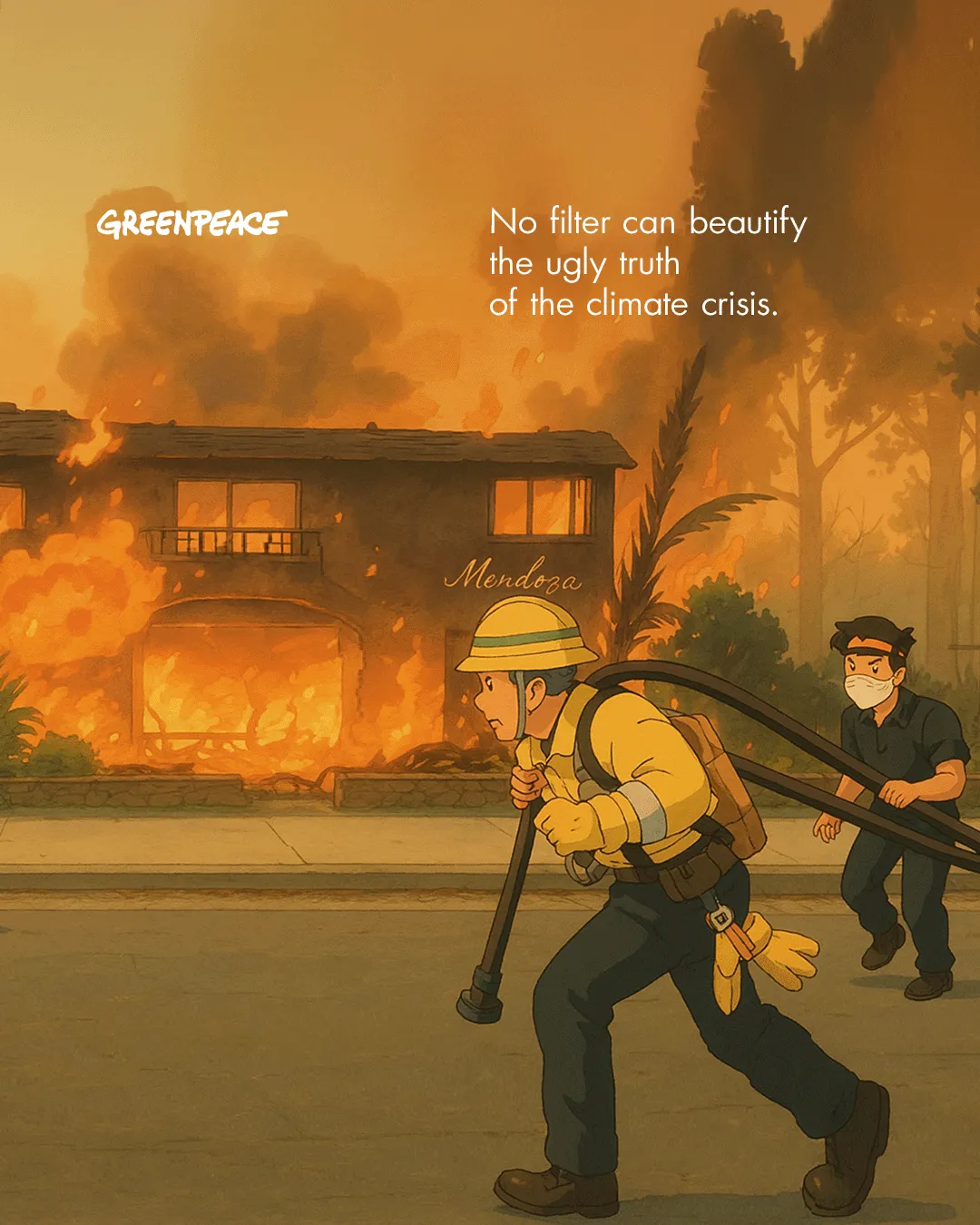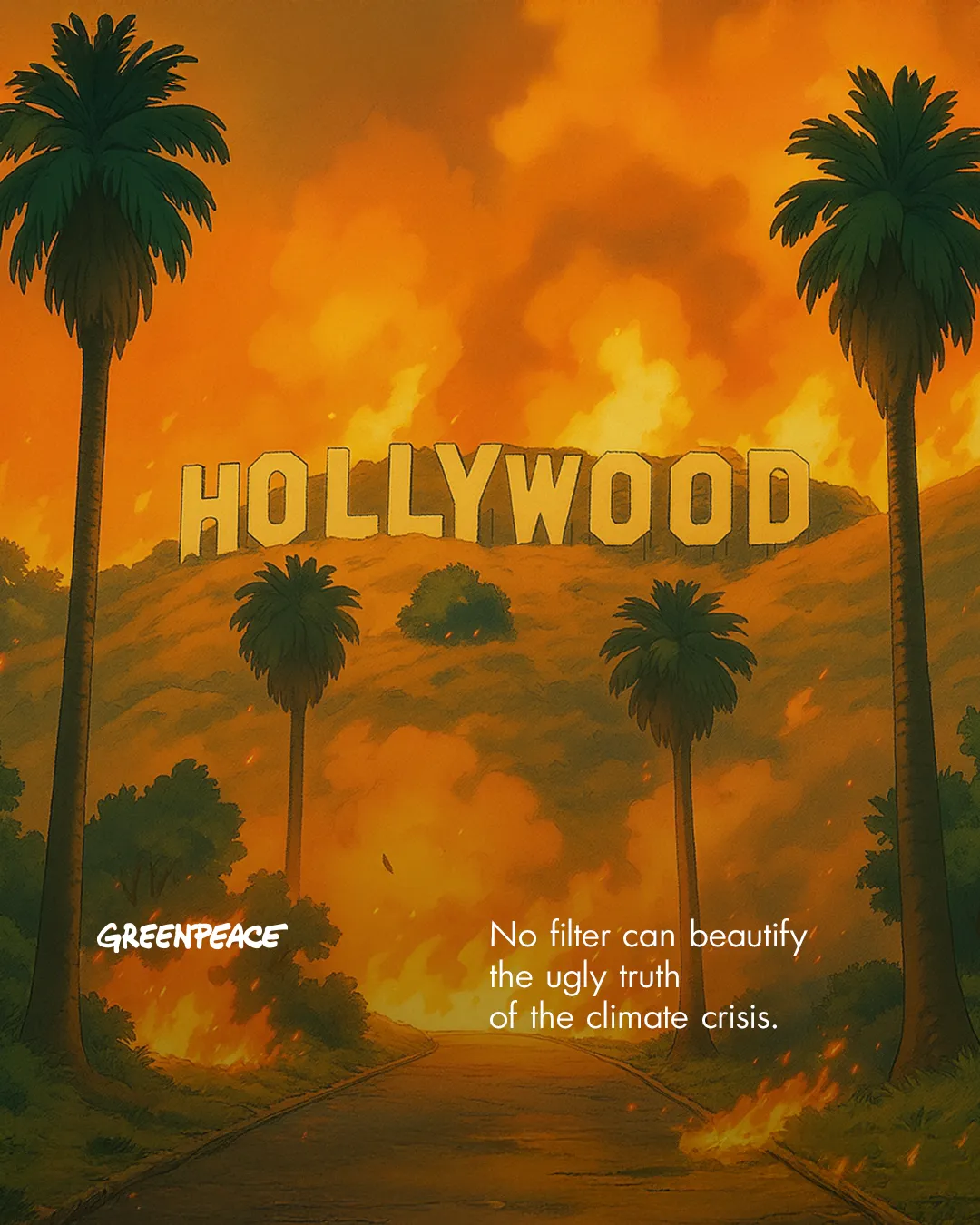Greenpeace Turns Ghibli-Style Art Into Climate Alarm

In a world captivated by aesthetic filters and AI-generated art, a new campaign by Greenpeace, in collaboration with Ogilvy Greece, is cutting through the noise. By tapping into the viral “Ghiblification” trend, the campaign transforms a feel-good online phenomenon (Ghibli-Style Art) into a powerful wake-up call about climate change and environmental destruction.
The result? A jarring, thought-provoking contrast that urges viewers to look past the beauty and confront the harsh realities threatening our planet.
What Is “Ghiblification” (Ghibli-Style Art I)?
The term “Ghiblification” refers to the rising trend of using AI tools to recreate everyday images in the distinctive, whimsical art style of Studio Ghibli—the legendary Japanese animation house behind beloved films like Spirited Away and My Neighbor Totoro. Known for its dreamy, nature-centric visuals and emotional storytelling, Studio Ghibli has long inspired artists and fans alike.
In early 2025, this trend exploded on social media. Users across the globe began applying Ghibli-style filters to personal photos, landscapes, and even memes, creating nostalgic, fairy tale-like visuals that quickly captured public imagination.
But as with many viral trends, beneath the surface lies an opportunity for deeper reflection.
Turning Fantasy Into Reality
Greenpeace’s Ghibli-Style Art brilliantly hijacks this viral aesthetic to deliver a sobering message: no filter can beautify environmental collapse.
Instead of using AI to create charming forest scenes or idyllic villages, the campaign applies Ghibli-like filters to real images of destruction—raging wildfires, oil-slicked coastlines, polluted rivers, and flood-ravaged towns. The effect is both surreal and unsettling.
What would normally look like an enchanting still from a Ghibli film is, upon closer inspection, an image of disaster. The dissonance forces viewers to reckon with the uncomfortable truth: aesthetic doesn’t equal reality.






Why This Campaign Works
This campaign stands out because it speaks the language of the internet.
Instead of preaching or scolding, it uses the same tools, visuals, and platforms that people are already engaging with—flipping them to drive awareness and inspire action.
Here’s why it hits the mark:
- Relevance: It taps into a current, global social media trend.
- Visual Impact: The contrast between the beautiful Ghibli-style rendering and the real-world devastation is immediately arresting.
- Message Clarity: It delivers a simple, clear statement—no filter can fix the planet.
- Platform Fit: The visuals are perfect for platforms like Instagram, where aesthetics dominate—but so do opportunities for viral advocacy.
The Ethics of AI and Art
Another layer of this campaign lies in the growing discussion about AI in creative spaces.
As AI-generated art becomes more accessible, debates are heating up about what it means for human creativity, authenticity, and ownership. Greenpeace’s campaign doesn’t directly take sides, but it smartly acknowledges the conversation.
By using AI in a socially conscious way, the campaign illustrates that technology—when used thoughtfully—can become a tool for truth-telling rather than escapism.
A Call to Action Beyond the Aesthetic
At its core, the campaign delivers this essential truth: real change doesn’t come from filters. It comes from action.
It challenges audiences not to stop at sharing pretty AI visuals or scrolling past images of disasters, but to:
- Get informed about climate issues.
- Support policies that protect the environment.
- Donate or volunteer with organizations making a real impact.
- Use digital tools for awareness, not just entertainment.
Final Thoughts: A Campaign That Captures the Moment
In the ever-evolving landscape of creative advertising, the Greenpeace x Ogilvy Greece Ghibli-Style Art campaign is a masterclass in timely, trend-savvy activism. By tapping into a viral aesthetic trend and turning it on its head, it forces us to re-examine the stories we tell—and the ones we ignore.
It’s not just about disrupting a feed. It’s about confronting a truth we can no longer filter out.
As brands and creatives continue to explore the intersection of AI, storytelling, and social impact, this campaign sets a bold example: one where beauty serves truth, and creativity fuels change.
This campaign is about:
Creative Print Ads, Ghibli-Style Art, Ghiblification, Greenpeace environmental campaign, AI-generated images, climate change awareness, Ogilvy Greece, marketing, Studio Ghibli art style, environmental advertising, viral marketing trends 2025, AI in advertising, no filter campaign, Ghibli Filter.